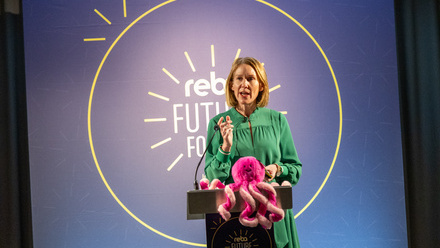For better pay and benefits transparency - leverage technology
Pay data is seldom exciting. It sits in spreadsheets or databases and is a necessary evil handled by a small portion of each company.
Genuine pay transparency will rely on a greater number of people accessing, understanding and valuing the data, and technology can be the bridge over that gap.
Gaining greater insight
Even the best pay benchmarking data is relatively flat. A job is matched to a code in a survey that compares the data against the market. It is useful to a point and new technology can take it a step further.
A specialist digital benchmarking tool can show a manager how an individual compares to the market, while overlaying gender, ethnicity and performance data to gain whole new insight.
That manager can quickly learn if males and females are doing the same job for different pay, or if a high performer – and potential flight risk - is being paid low against the market.
Similarly, digital solutions can help with recognising and grading comparable work, another key factor in pay transparency requirements that often comes under scrutiny.
A digital job evaluation system helps grade roles at similar levels fairly and consistently and provides a framework linked to a company’s pay structure.
Employees can then see and understand how roles are being evaluated and employers can feel more confident in the robustness of their job architecture in flagging similar work or work of equal value.
Enabling managers
Many organisations keep reward hidden in HR, but increasingly the trend is to breathe more transparency throughout an entire organisation.
That is also difficult to do using flat spreadsheets because, by their nature, they will never grab attention. By using the same kind of tech tools, we can educate managers to give them more ownership, accountability and visibility over pay, and ultimately enable them to make decisions within a better framework.
Using visual displays and dashboards, managers can gain a far better understanding of how pay works in their team. They can then feel more empowered when they speak with their team, armed with the data and tools to know whether they are paid competitively in the market.
Greater pay transparency for all
On the flip side of that manager-worker conversation, many workers can think that they are underpaid, when they are not.
Increasingly, employees are using open-source data platforms like Glassdoor and PayScale to to check what the market is potentially paying, and gaining greater confidence when dicussing pay with managers.
But this data is limited and almost always lacks context, which can lead to misinterpretation.
Employees may one day use the same kinds of technology tools in-company to see their individual comparison to the market and gain that reassurance.
There is still some way to go before this can happen because most organisations lack the confidence and readiness to promote pay transparency on that scale, but that is the direction of travel.
Keep tabs on pay equality
When it comes to gender pay reporting, the requirements are still set at a low bar. Many companies have been doing gender pay reporting for five years, without any real change.
The base requirements - median and mean gaps in terms of base pay, or ‘ordinary pay and bonuses’ – only scratch the surface of what is driving these pay gaps.
New technology can analyse these gaps in greater detail and understand what is driving them.
For example, correlation analysis enables us to see whether discrepancies between employees are due to different lengths of service or education, or whether particular job levels and ranges are driving pay gaps.
These new levels of intelligence means we can address them, either by introducing bias training or by segmenting organisations into different populations, some of which may have a greater influence on gaps than others.
Enabling smarter recruitment
Clearly, with more sophisticated data analysis recruiters can put themselves in a better position by gaining greater insight into each role.
Currently, recruiters often rely on HR or the reward team for this kind of data but technology will give a greater degree of self-sufficiency within recruitment to access market data, assess current pay practices and understand where people are positioned so that any new recruitment does not create or build on inequity.
Equal access to benefits
Finally, there is no doubt that tech is already playing a major role in giving employees eual access to benefits.
This may not directly relate to pay transparency, but giving workers at every level the same 24/7 access to their benefits package through a smartphone app, moves everyone towards the principles of equality and fairness that transparency relies on.
A smartphone app, for example, can enable every worker – from company director to factory assistant – to log in and view pension details, access wellbeing advice and discount vouchers and call an online GP.
Platforms like this will only improve with a greater level of personalisation and curation made possible by AI and all that it promises.
Supplied by REBA Associate Member, Personal Group
Personal Group provides the latest employee benefits and wellbeing products.








